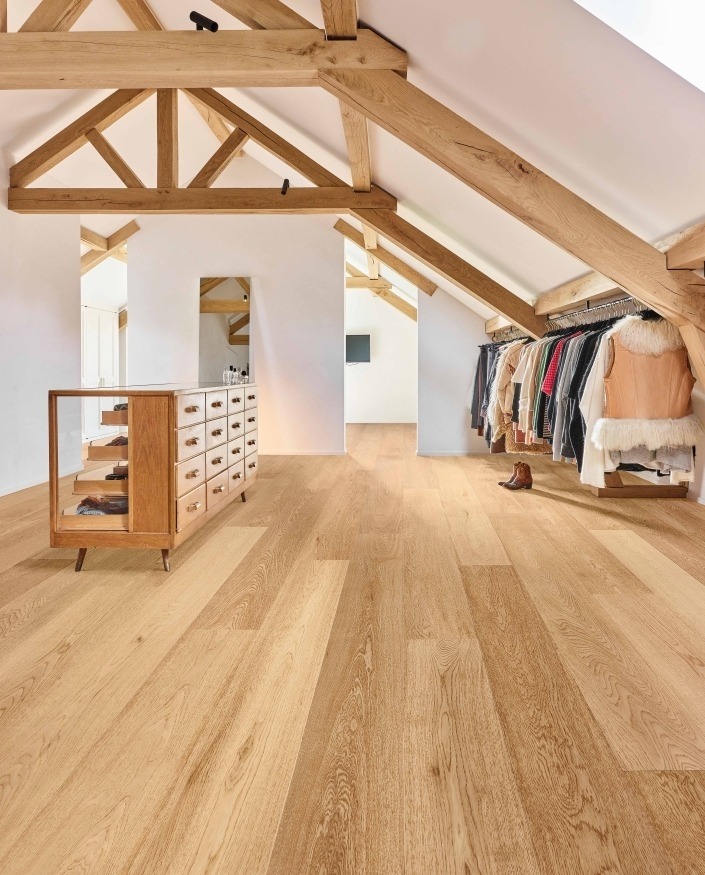
What is the condition
— of your subfloor?
For optimal results for your new flooring it is very important that the subfloor is dry, even, firm and clean.
1
— Dry
With an electronic moisture meter, available at most DIY Stores, the humidity of the substrate can be checked before you install your wooden floor.
If you are unsure about the residual moisture in the subfloor or if there is a chance that moisture can rise from the substrate, take precautions and install an extra polyethylene moisture barrier film.
For sand cement subfloors with a residual moisture content of up to 2.5% it is possible to use a vapour barrier primer.
2
— Even
For a perfect installation of your Lalegno floor it is essential that the subfloor is completely stable, flat and smooth. So check the subfloor thoroughly, especially when renovating.
Stable, flat and smooth, that means that no height differences occur between the different parts of the subfloor. With a straight rod of respectively one or two meters, you can determine the height differences that occur. Depending on the installation method and the substrate the differences per two meters should amount to maximum 3 to 6mm. Follow the guidelines in the table below closely for a successful result.
If the surface is not sufficiently flat, in most cases that can be solved with a levelling agent.
3
— Firm
It is also important that the surface is sufficiently hardened and is firm.
The strength (surface cohesion) of the subfloor must be at least 0.5 N / mm². There are complicated measurement methods to determine whether screeds satisfy those requirements, but easier is to use a glue spatula or sharp object and scratch the surface. If parts of the screed come off the floor screed is not sufficiently firm and a reinforcement agent needs to be used.
Check the subfloor for cracks and loose parts. Fissures and cracks can usually be repaired or filled with suitable products. It’s better to remove loose particles and then fill the screed up again.
If you are faced with a screed that is crumbling or porous, it is best to use a special primer for weak subfloors. There are also primers which are specifically suitable for the reinforcement of cement or anhydrite screeds, both in the depth as well as on the surface.
4
— Clean
Before you start with the installation of your flooring, make sure the area is completely dust and grease free and that all traces of paint, glue, stucco, plasterwork, grease, oil, etc. have been thoroughly removed.




